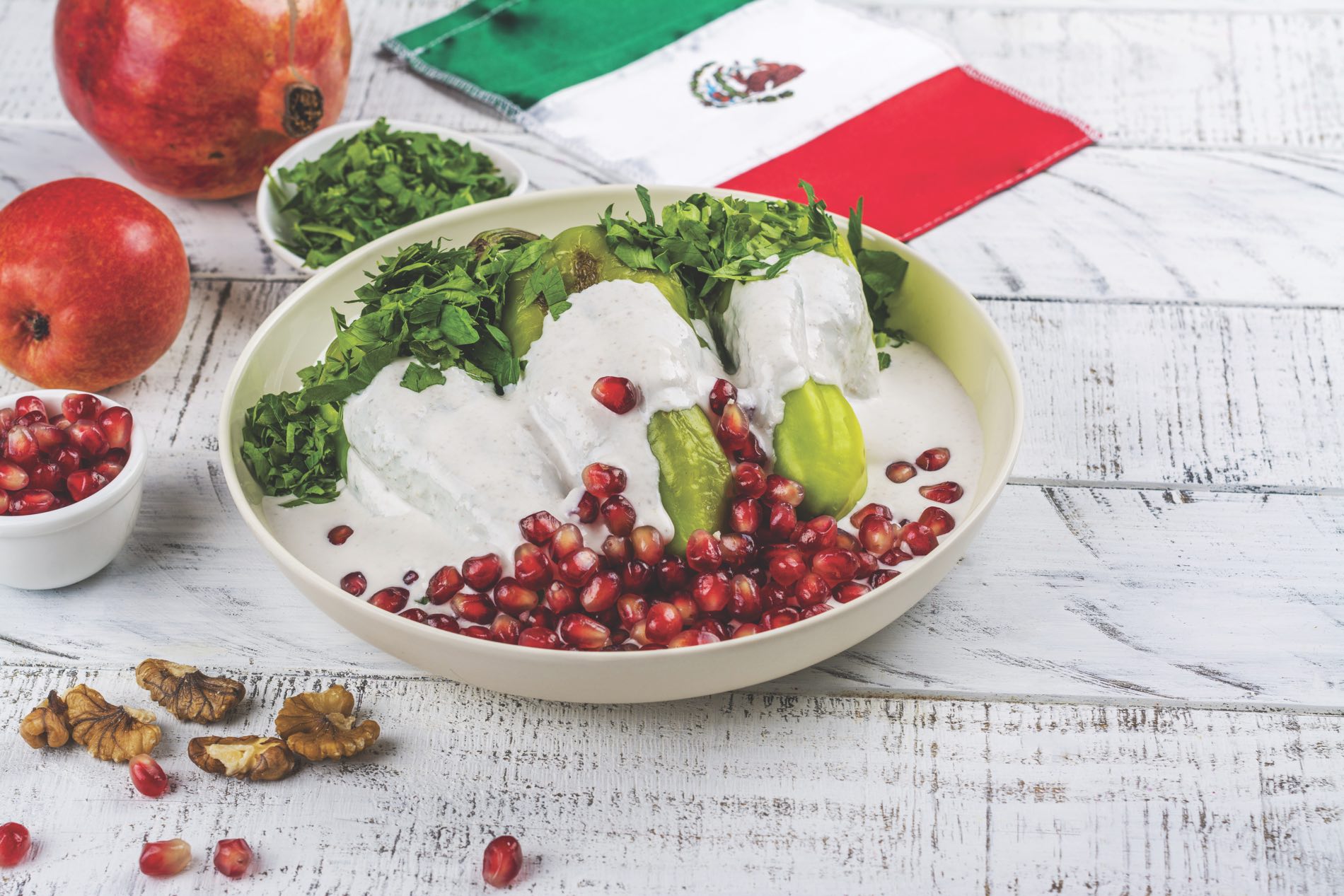[page_title]
[post_date]
By: LBJWhen it comes to traditional Mexican food the options seem endless, there are the “Three T’s”; tacos, tamales and tostadas, and every state has its own traditional dishes. However, if there is one dish that represents Mexico as a whole, gastronomic experts and historians agree that Chiles en Nogada take “First Plate”, nevertheless for many they are unknown. This is mostly because they are a seasonal dish, that can only be found between August and October. Add to that the fact that preparing traditional Chiles en Nogada takes more time and effort than the average dish, and you realize why, as delicious and traditional as they are, Chiles en Nogada can be a bit hard to find. What is a Chile en Nogada, you ask? It is a Poblano Pepper stuffed with a sweet and savory filling made of meat, fruit, and nuts, topped with a walnut sauce and garnished with pomegranate and parsley. Now, picture the plate and you will realize that it has the colors of the Mexican flag. The parsley is green, the sauce is white, and the pomegranate is red, and there you have it: Mexico on a plate.Stories abound about the origin of such a traditional dish. The most widely accepted one is that the nuns from the Convent of Santa Mónica prepared the dish to celebrate the independence of Mexico in 1821. When Agustín de Iturbide, who was to become the first regent of Mexico, went through the city of Puebla, where the convent was, and the nuns chose the garnishes to reflect the colors of the flag that the rebel army of the newly formed country waved at the time which, by the way was the inspiration for Mexico’s current flag.Another less likely, but more romantic story, popularized by a famous Mexican writer; Artemio de Valle Arizpe in the 20th century, is that the dish was prepared by three ladies from Puebla who had boyfriends in the rebel army that was fighting for Mexico’s independence and when they heard of the victory, which meant their boyfriends would return home, they prepared the dish to celebrate and each one chose a color that reflected the colors waved by the army their boyfriend’s belonged to.The truth is, as ethno-historian Beatriz Ortiz mentioned in her thesis about the evolution of colonial food in Mexico; “in order for a dish to become traditional it has to evolve, it cannot be created overnight, because it would be practically impossible for the public in general to accept it and make it their own.” Once a dish is prepared over and over and undergoes a necessary number of changes and adjustments it becomes part of the culinary tradition of a community, and this is the case with Chiles en Nogada. FIVE INTERESTING FACTS ABOUT CHILES EN NOGADA1.- They are a seasonal dish prepared only between August and early October.2.- Back in the late 16th century, before the war for Mexico’s independence began, it was traditional to serve poblano peppers stuffed with seasonal fruits and topped with a walnut sauce. This was most likely the first version of Chiles en Nogada.3.- The original ingredients were all locally sourced and were considered inexpensive to make. Now, Chiles en Nogada are considered to be a delicacy and cooks tend to include high-priced ingredients in their recipes. 4.- Tradition calls for the sauce to be prepared only with walnuts. Food historians state that making the sauce with any other nut is close to an abomination and certainly disqualifies the dish from having the word Nogada in its name.5.- All stuffed pepper prepared in the 17th century in Mexico were battered, therefore a traditional Chile en Nogada must be battered. After all these facts and tales, you are now prepared to form your own opinion and decide whether the Chiles en Nogada being served at your favorite Mexican restaurant are close to the dish that, if we decide to believe the tale, was served to celebrate the birth of the independent country that we love so much. ¡VIVA MEXICO Y BUEN PROVECHO!



